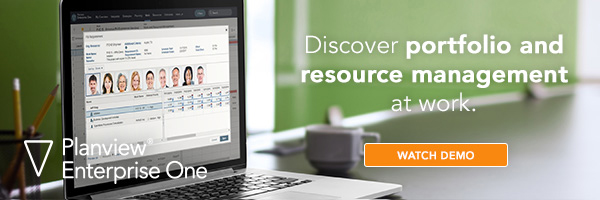
The following content is based on the whitepaper, “Bigger Than a Breadbox: 10 Tips for Better Project Estimates, Part 2,” written by Jerry Manas. For your reading convenience, we’ve decided to give it everlasting life here on the blog.
From all the previous six parts of this series, it should be clear that effective estimation is a primary driver of project success, resource planning, and portfolio alignment. No doubt, the impacts of poor estimates extend far beyond the task or project in question, and permeate the entire portfolio, also leading to rampant misuse of organizational resources.
For easy reference, here’s a concise summary of the ten guidelines we’ve discussed for more effective project estimating, divided up by the related part of this series.
Part 1: Improve Project Estimates and Escape Crisis Mode
- Use Horizon-Based Estimates. Use multiple levels of progressively accurate estimates; from order-of-magnitude to budget to baseline. Don’t expect pinpoint accuracy without a full project plan.
- Employ Traditional vs. Agile Approaches Strategically. Determine whether to estimate the schedule and cost based on fixed requirements (traditional model) or estimate the features that can be delivered within a fixed schedule and cost (Agile model). The strategy can vary depending on the nature of the project.
- Demonstrate Due Diligence for Capital Requests. Cover your bases when submitting Appropriation Requests by demonstrating due diligence, offering rationale for the chosen solution, and outlining the risks and contingency plans.
Part 2: Improving Project Estimates is all About Direction
- Adopt Top-down and Bottom-up Estimation Methods. Know the available estimation methods, including analogous, parametric, expert opinion, and risk-based PERT estimates. For bottom-up estimates, be sure to estimate both duration (for schedule) and effort (for cost) and encourage project and resource managers to communicate.
Part 3: Project Estimation Methods
- Use Your GPS. Leverage Contributor Estimates, Earned Value, and Earned Schedule to stay on top of remaining effort, remaining budget, and remaining schedule, respectively. Also, stay in touch with resources and resource managers regularly to ensure availability.
Part 4: It’s Time to Start Planning for Resources
- Ensure Resource Availability. After planning task durations and assigning resources, be sure to refine the duration based on resource availability. It is up to the resource managers to ensure accurate availability data for their resources. Delayed projects caused by unavailable resources lead to downstream impacts on the entire portfolio. Demand prioritization is also key to more efficient resource usage.
Part 5: How Risk Management is Crucial to Project Management
- Include Management Reserve and Contingency Reserve. Especially for large projects, consider having a Management Reserve (a separate budget controlled by management, generally 5-10% of the project budget) for unknown risks. Also, have a Contingency Reserve (controlled by the project manager) for addressing known risks. This amount should be part of the project budget and based on the expected cost impact of the risks.
- Have a Separate Project for Estimating Mega-Projects. Preparatory work in creating a business case for large projects can be time consuming and resource-intensive. Consider having a separate project for this effort, which can result in better tracking of resources; a more comprehensive business case; proper scheduling of the resulting mega-project; and less surprises in the project portfolio.
- Consider Multi-Point Estimates. Best of all is either a PERT estimate weighted toward Most Likely (assuming it’s based on a risk assessment and not personal intuition) or selecting from multiple levels of accuracy ranges based on the degree of risk (e.g. moderate-low risk = 10-15% accuracy).
Part 6: 6 Reasons Why Projects are Late
- Don’t Forget the Other Reasons Projects are Late. Poor estimates are only one leading cause of project delays. Other causes include unrealistic deadlines; customer/partner availability; resource availability; unpredictable events; or a management decision based on a change in priorities. The suggestions in this paper can help you address all of these.
Where PPM Technology Fits In
Earlier in this series, we talked about what makes a “good” Project Portfolio Management (PPM) solution; here, suffice it to say that if your organization is still making do with spreadsheets and/or desktop applications, some of those estimation pains you’re feeling will likely be with you for the foreseeable future. Again, this is not to say that PPM—or any technology—can replace the human touch: but it can go far in supporting it.
Vis-à-vis PPM and the estimation challenges we’ve talked about in the latter half of this series, let’s focus on resources. This is a really big payoff when it comes to enterprise PPM, as the good solutions (and here I point you to the analysts and your peers to help you make the “good” determination) pull in current and future demand from every point in the enterprise; let you see current allocations and future commitments; and allow you to map everything to company strategy, departmental plans, and budgets. When properly deployed and implemented, a PPM solution can really help you get the right resources on the right work at the right time. And that’s resource management in a nutshell.
Demand prioritization is another topic we touched on, especially the short shrift the incredibly vital capability is given when it comes to resource management. The problem is that few organizations have an objective way to prioritize projects: oftentimes it’s top-of-pile, easiest first, or squeaky wheel gets the oil. If this sounds familiar, an enterprise PPM approach may be the winning one for your organization in that it can provide impartial view based on factors like resource availability, potential value, and so forth. This reduces the impact of politics and gut instinct on the decision-making process and makes it easier for project and resource managers to allocate resources logically.
There is more that an enterprise PPM system can deliver beyond the resource management benefits; the above are just a few points as you consider your needs.
To learn how Planview can help your organization improve its project management processes, Planview Portfolios today!






